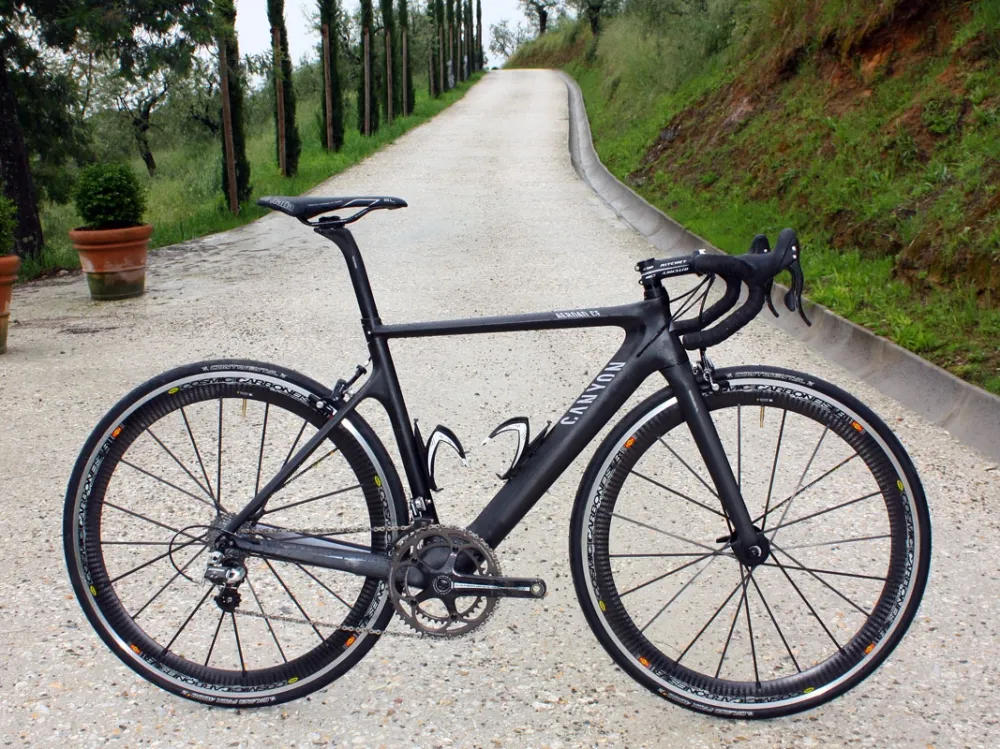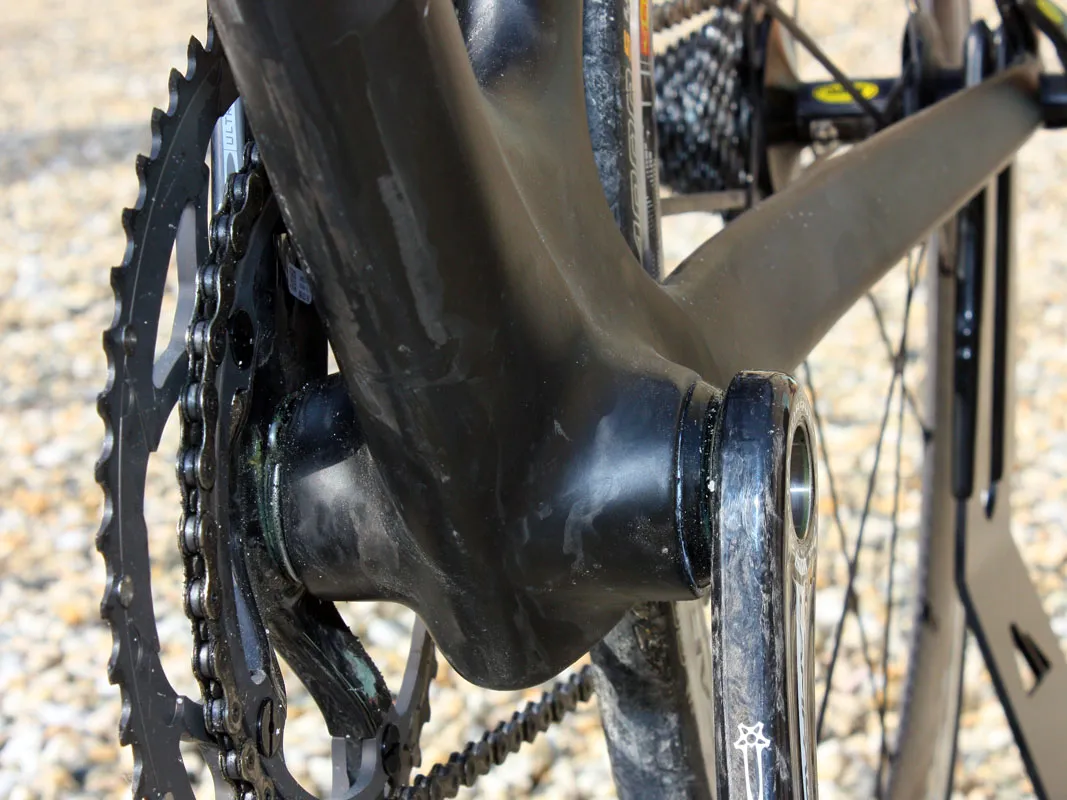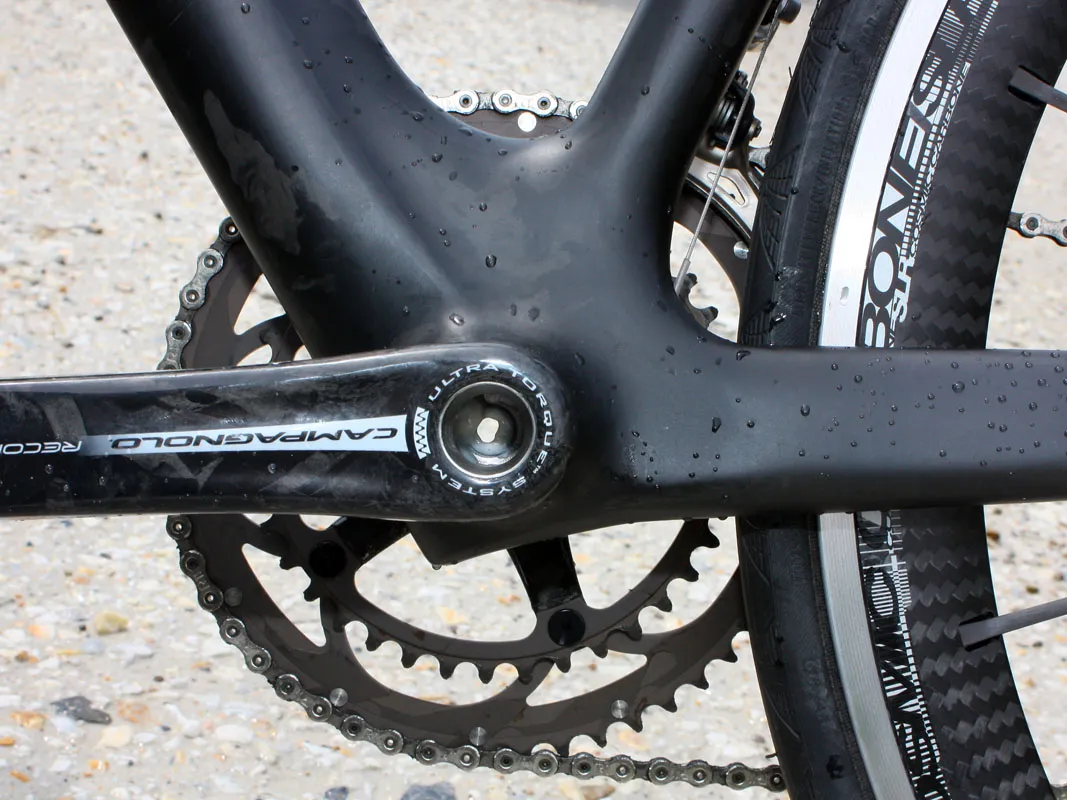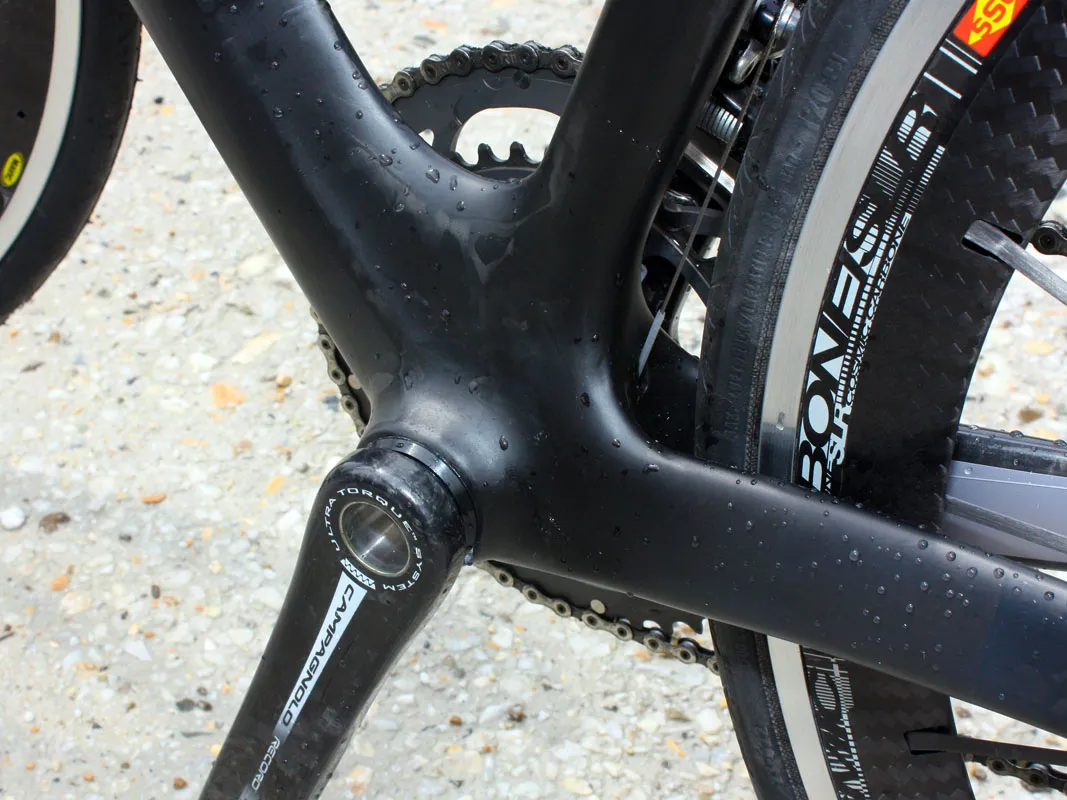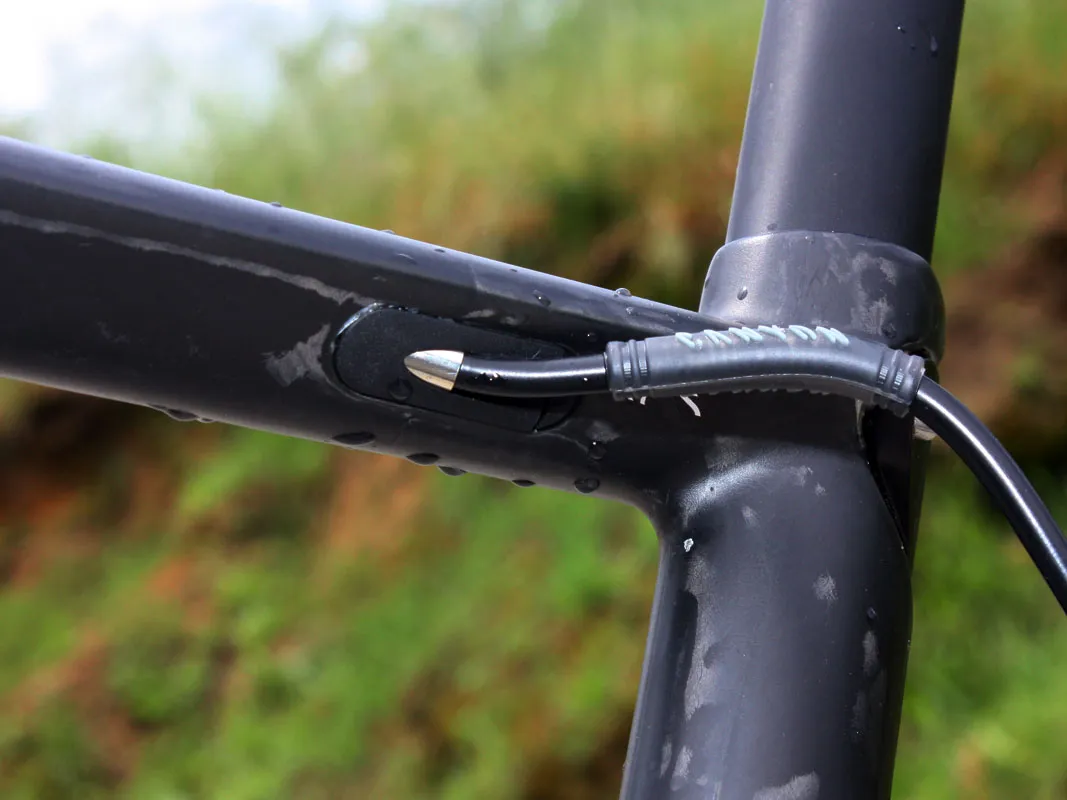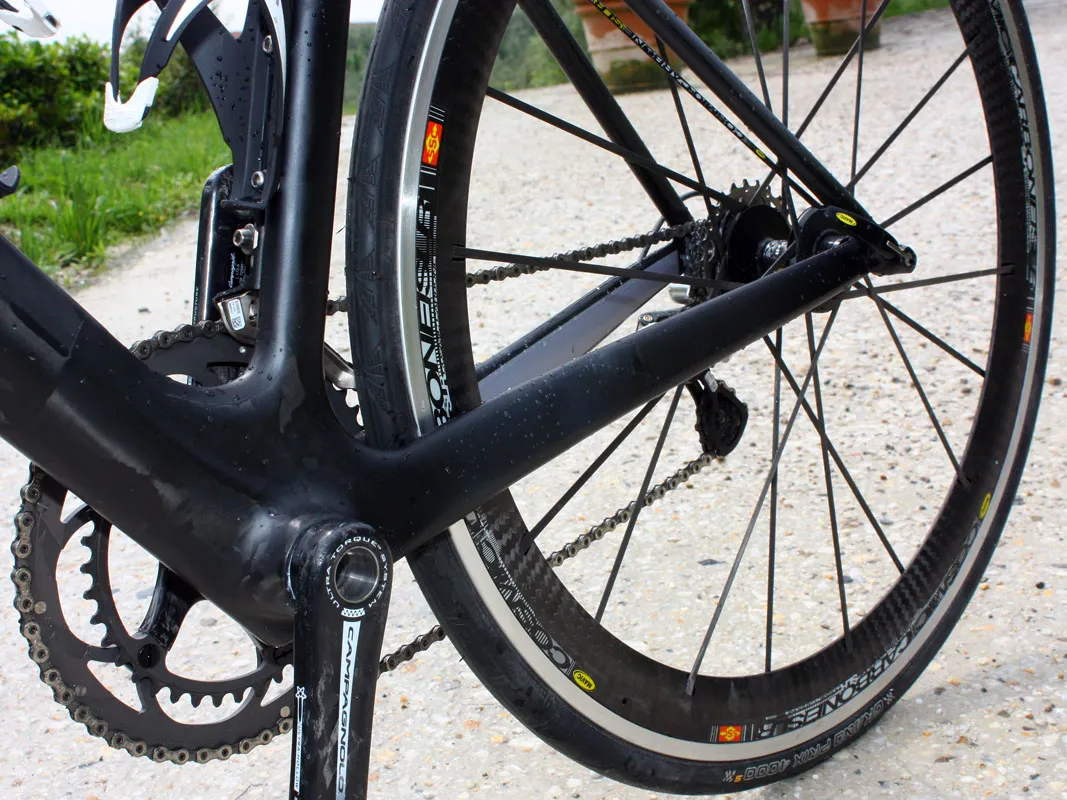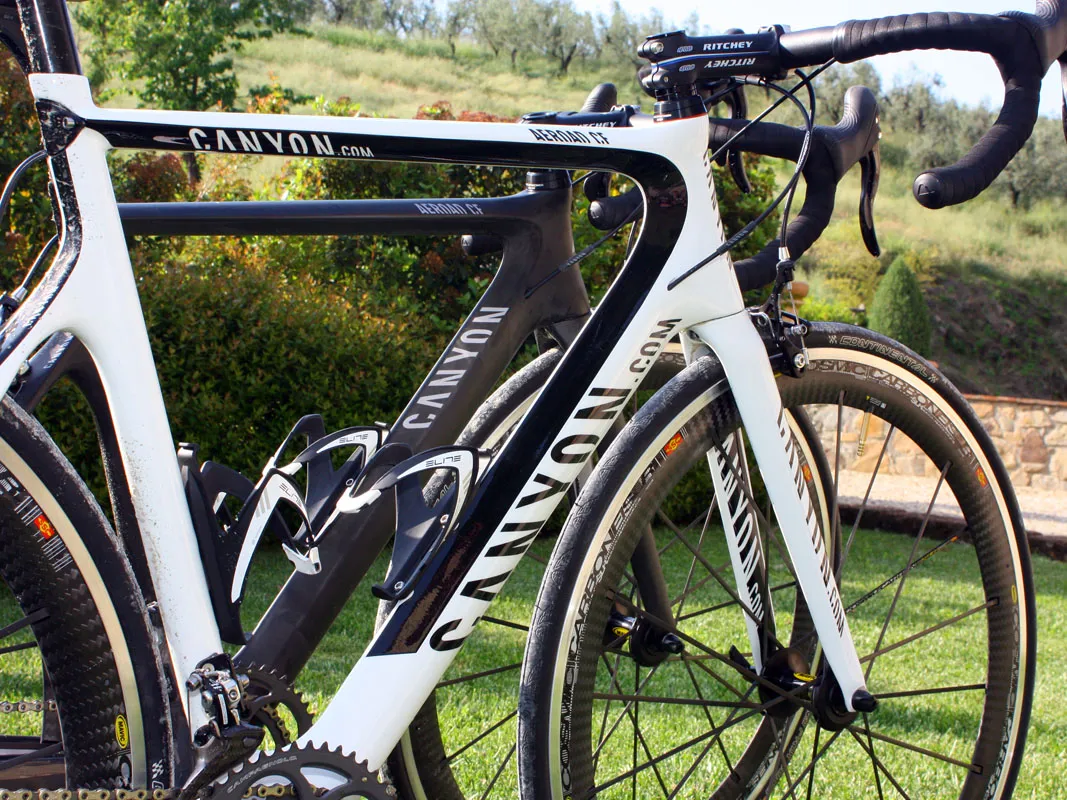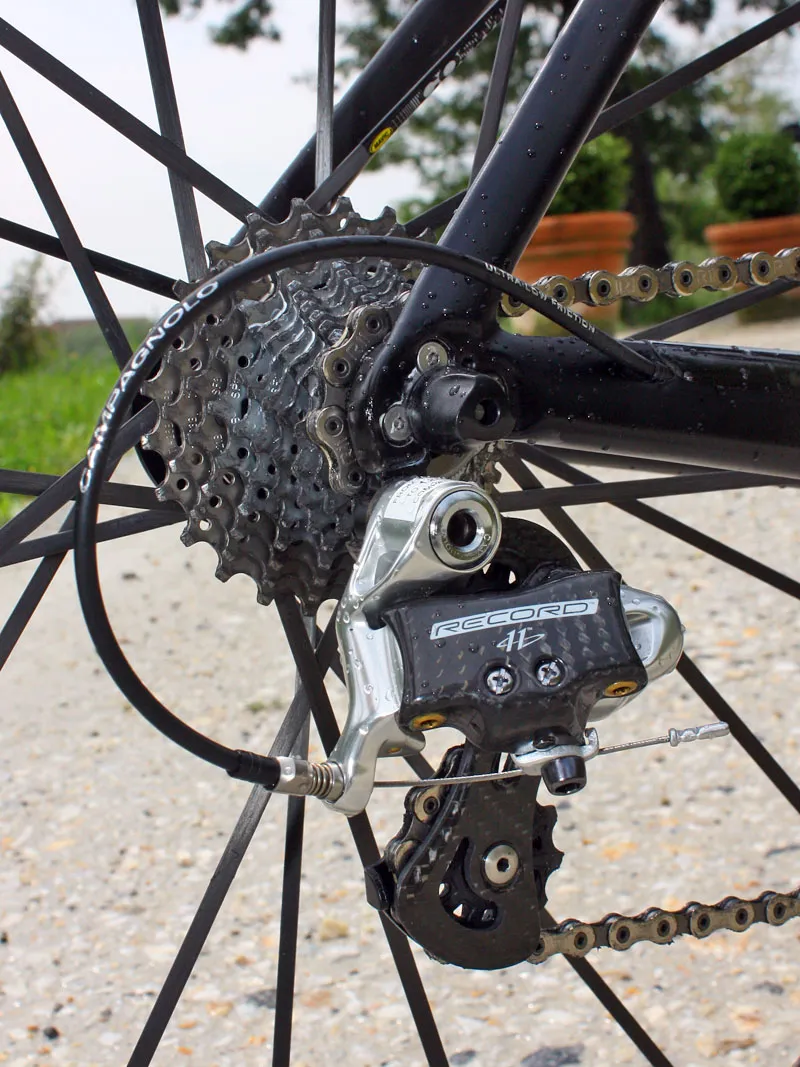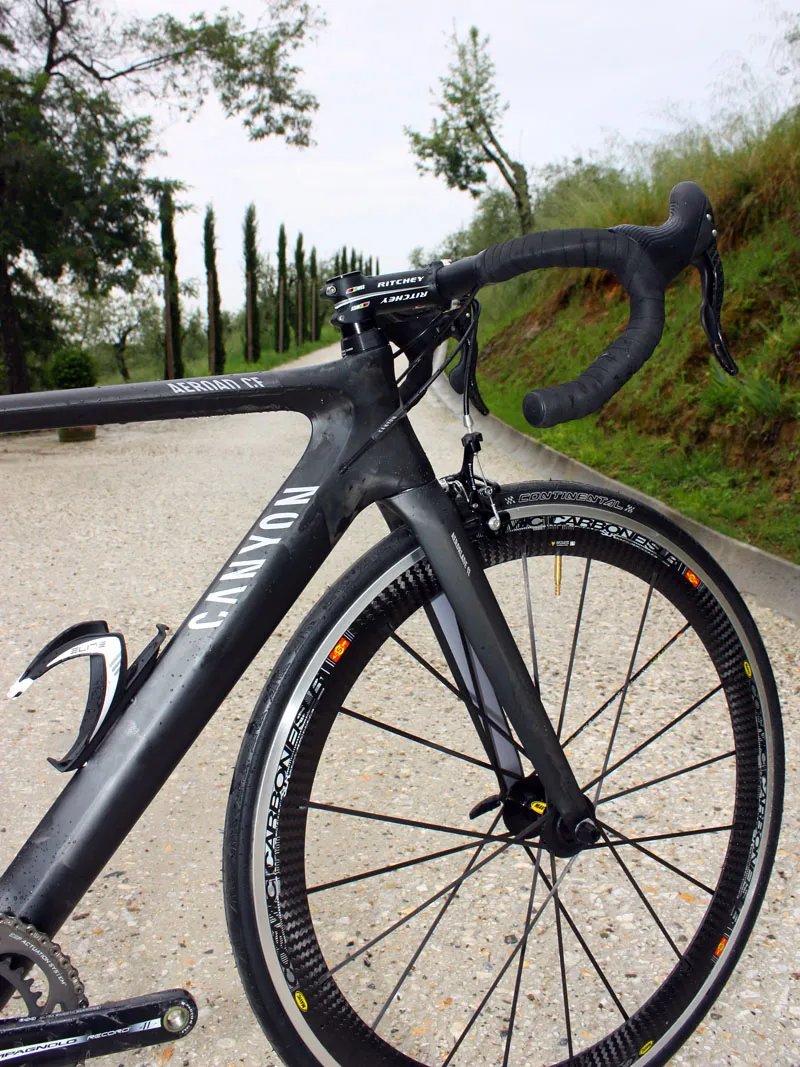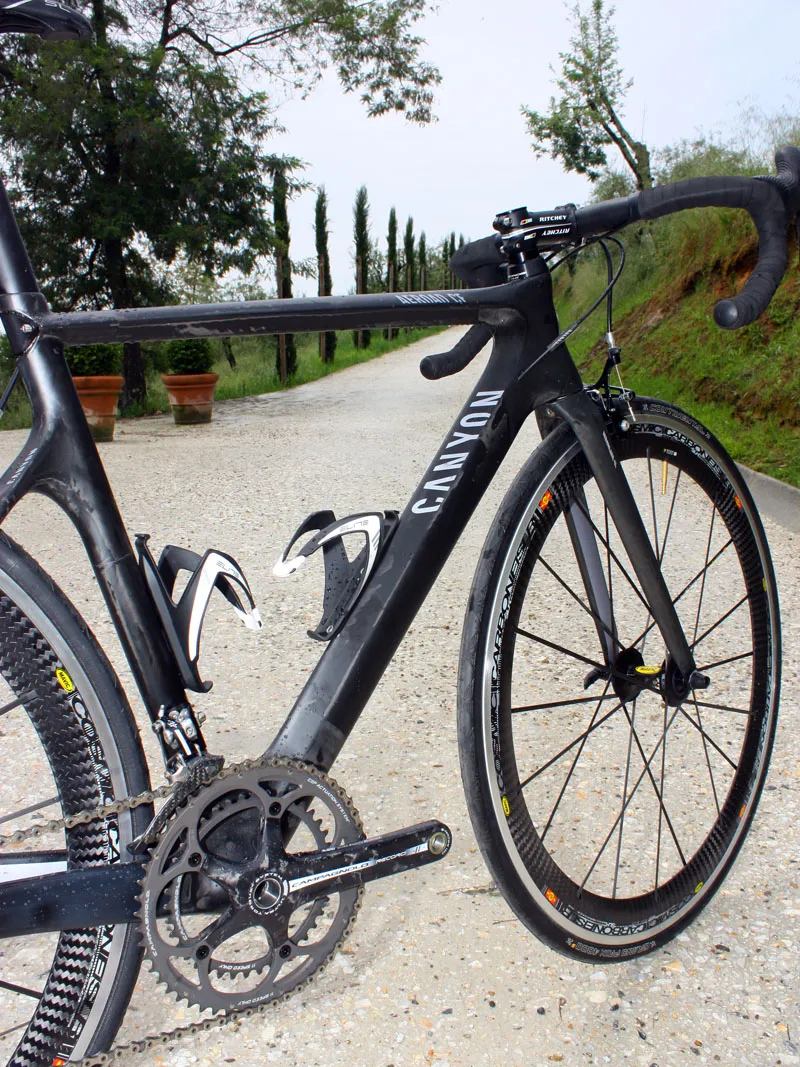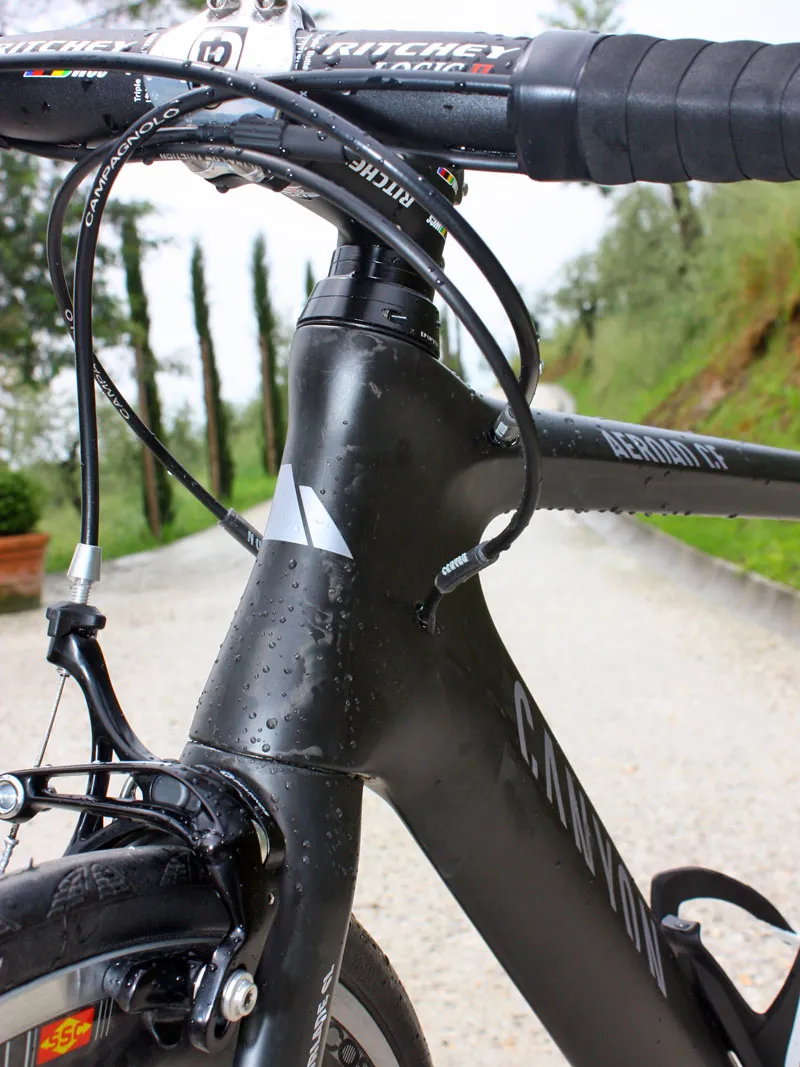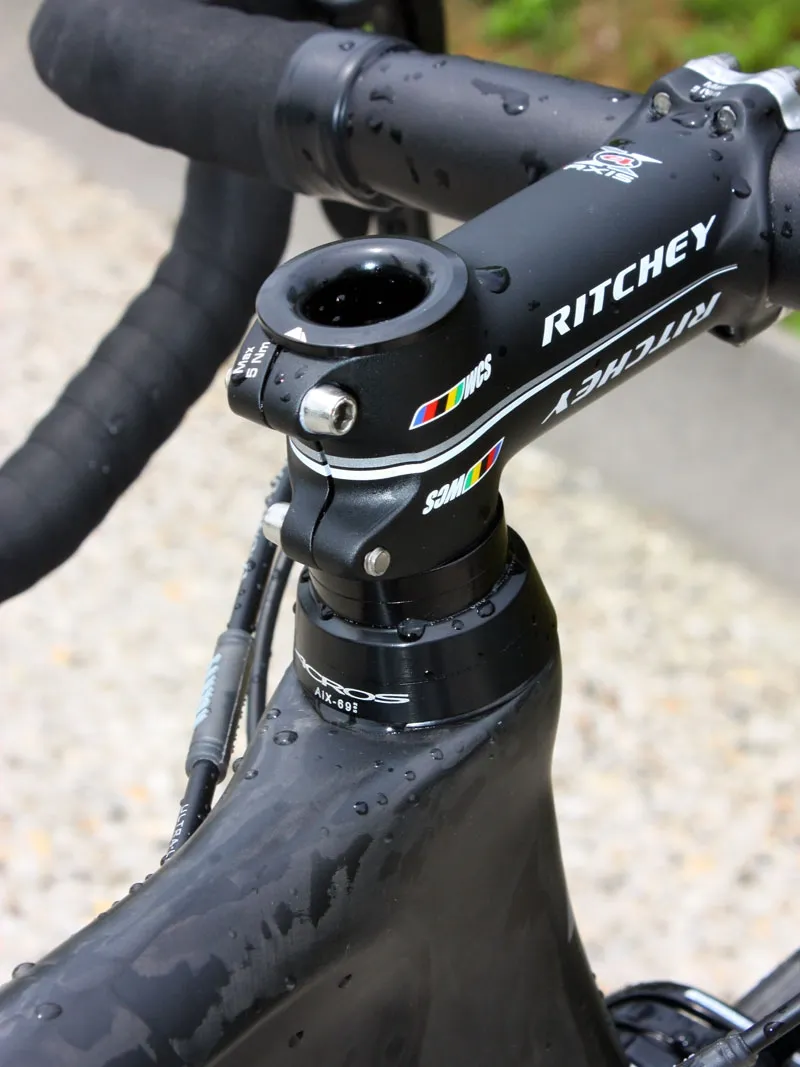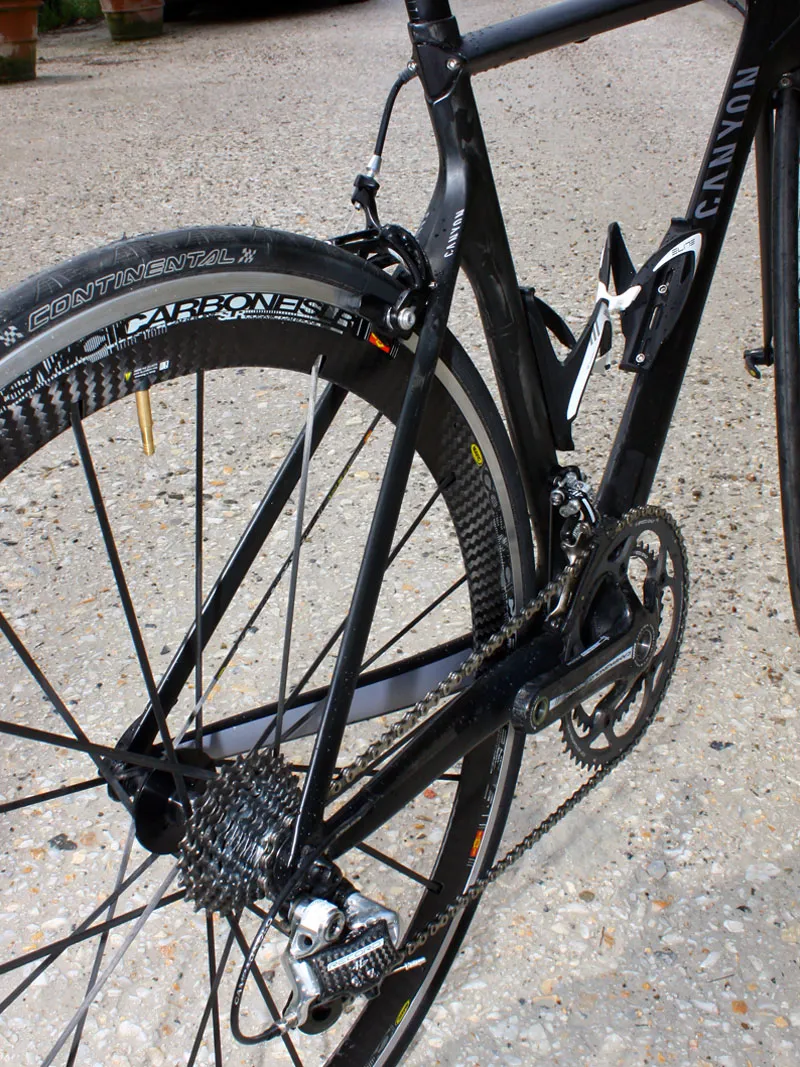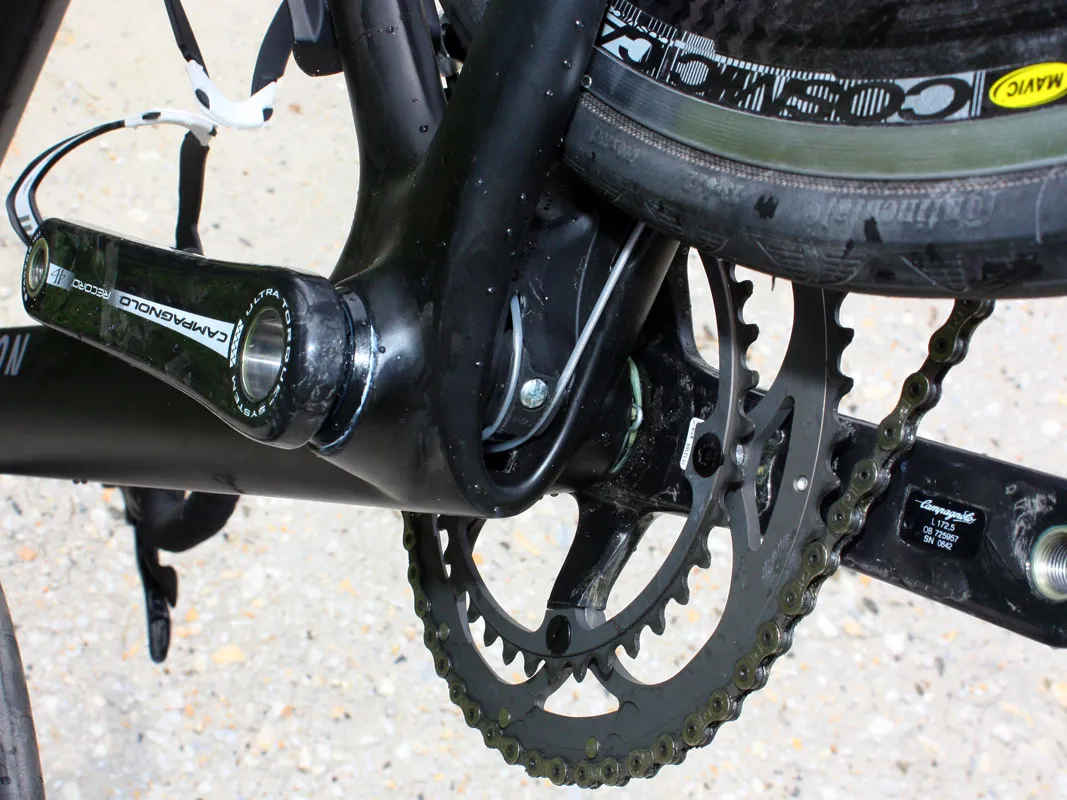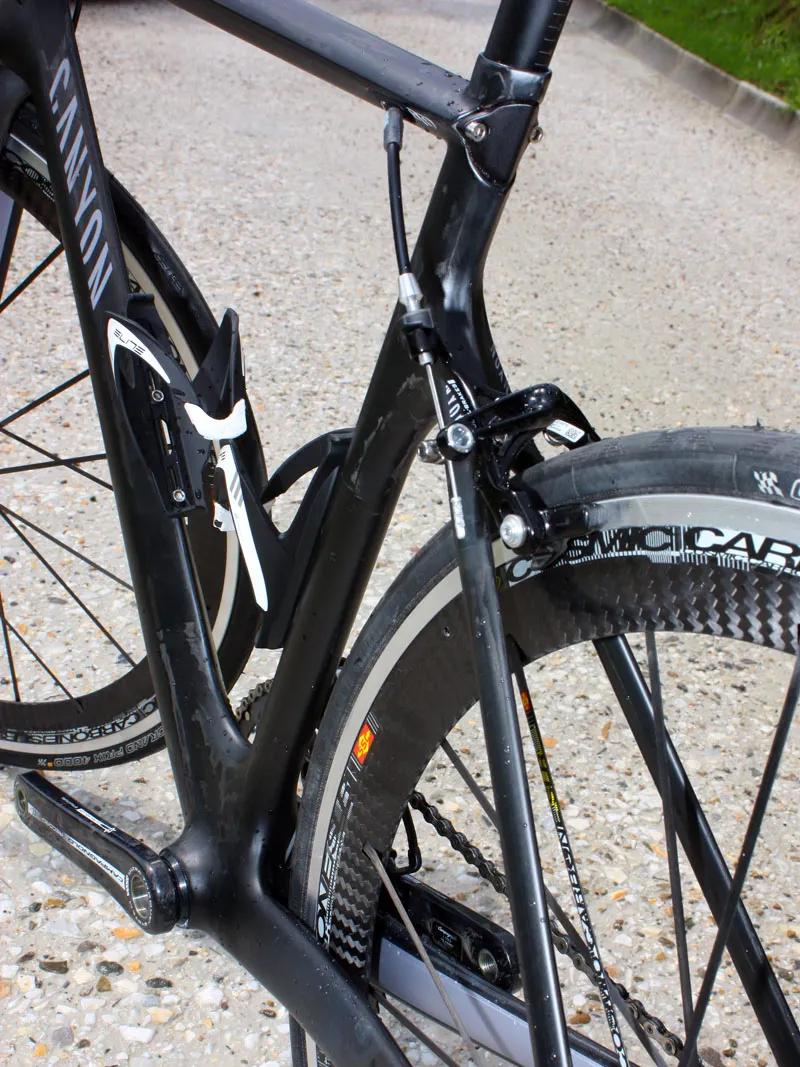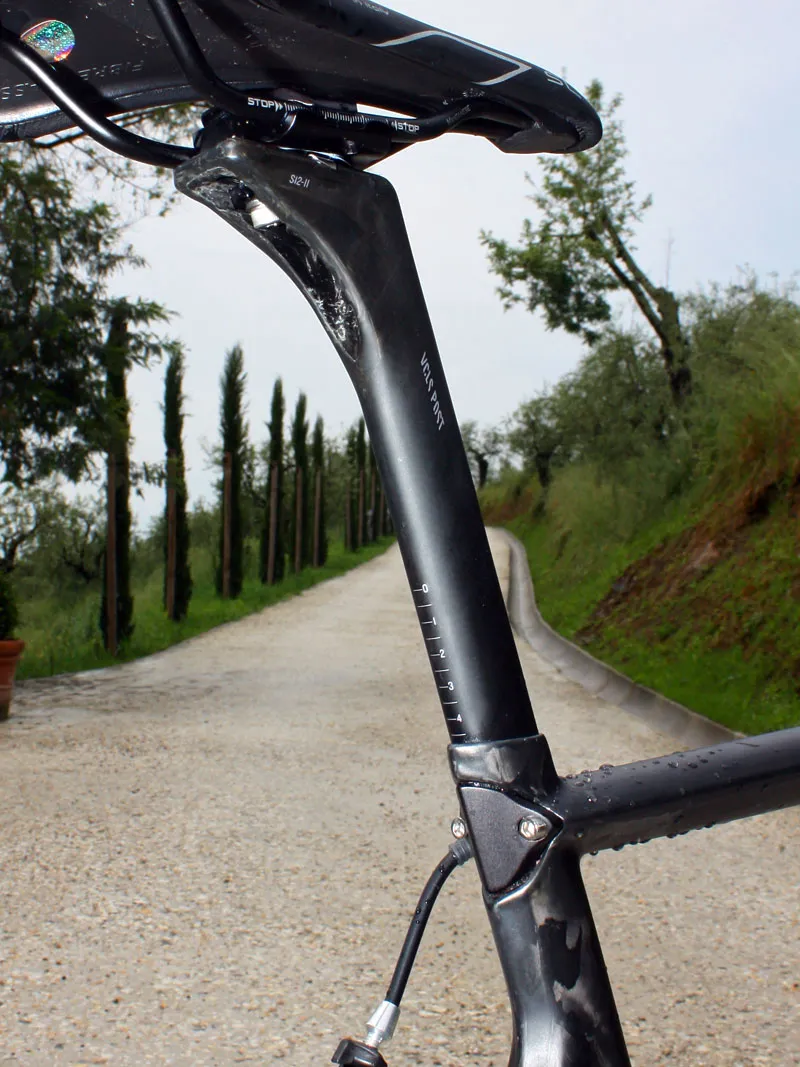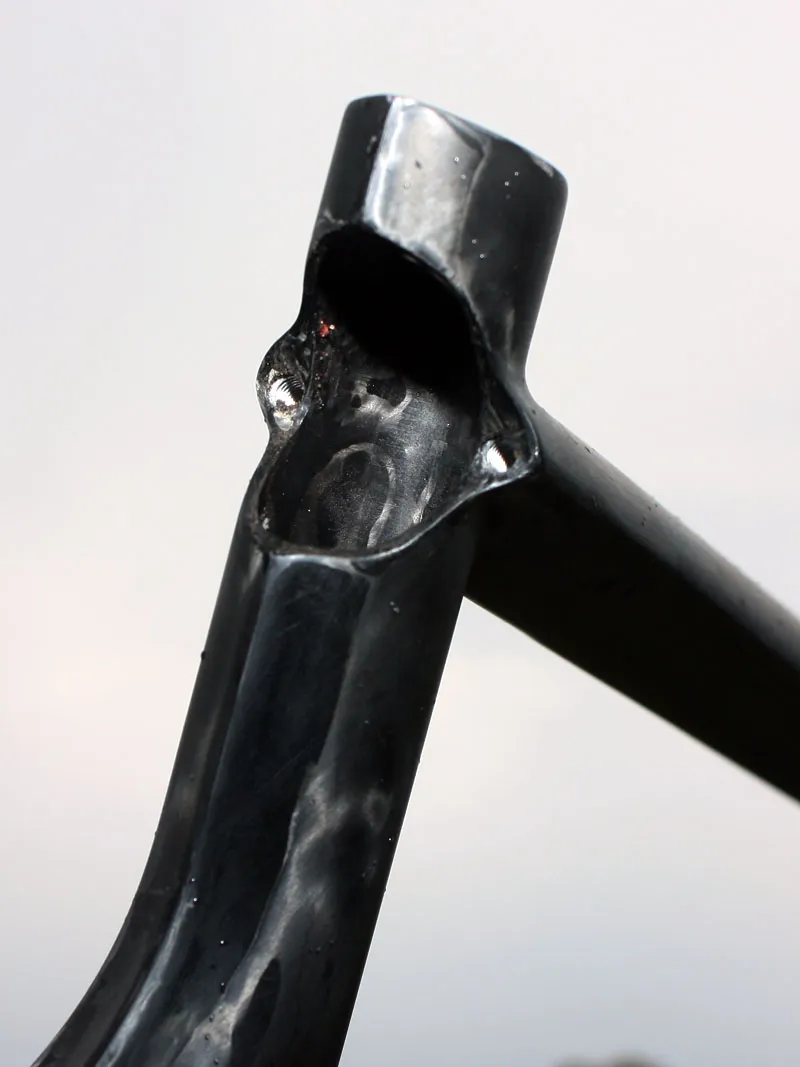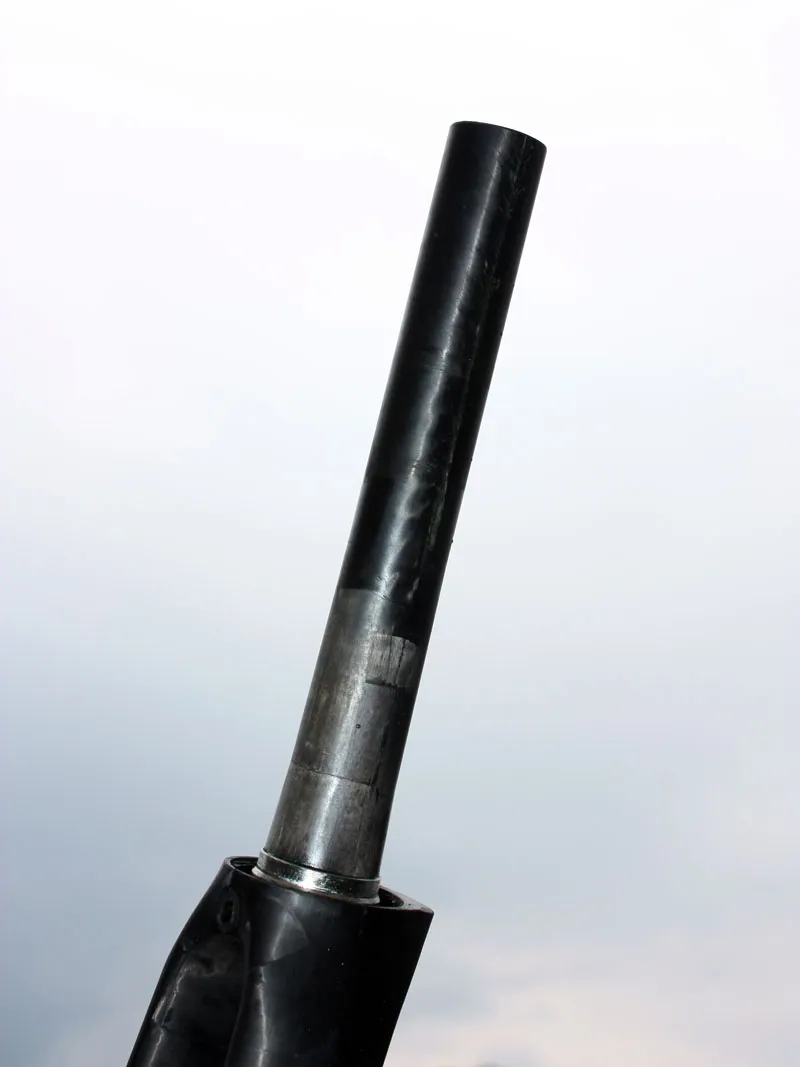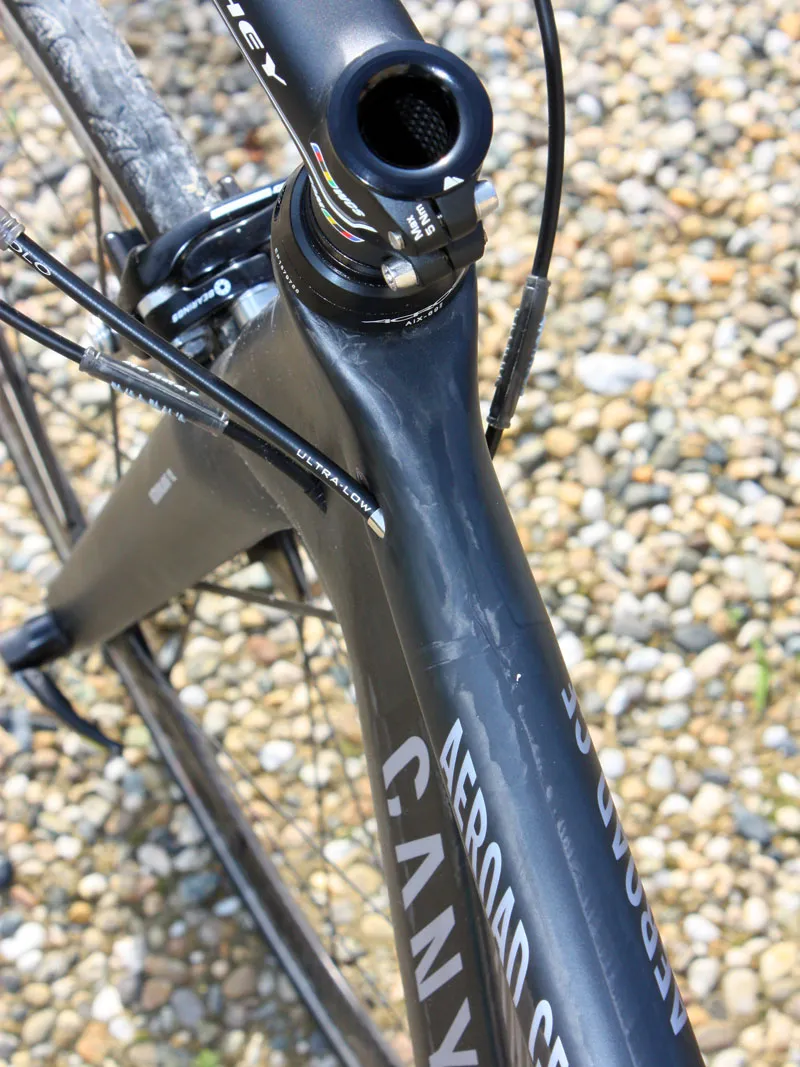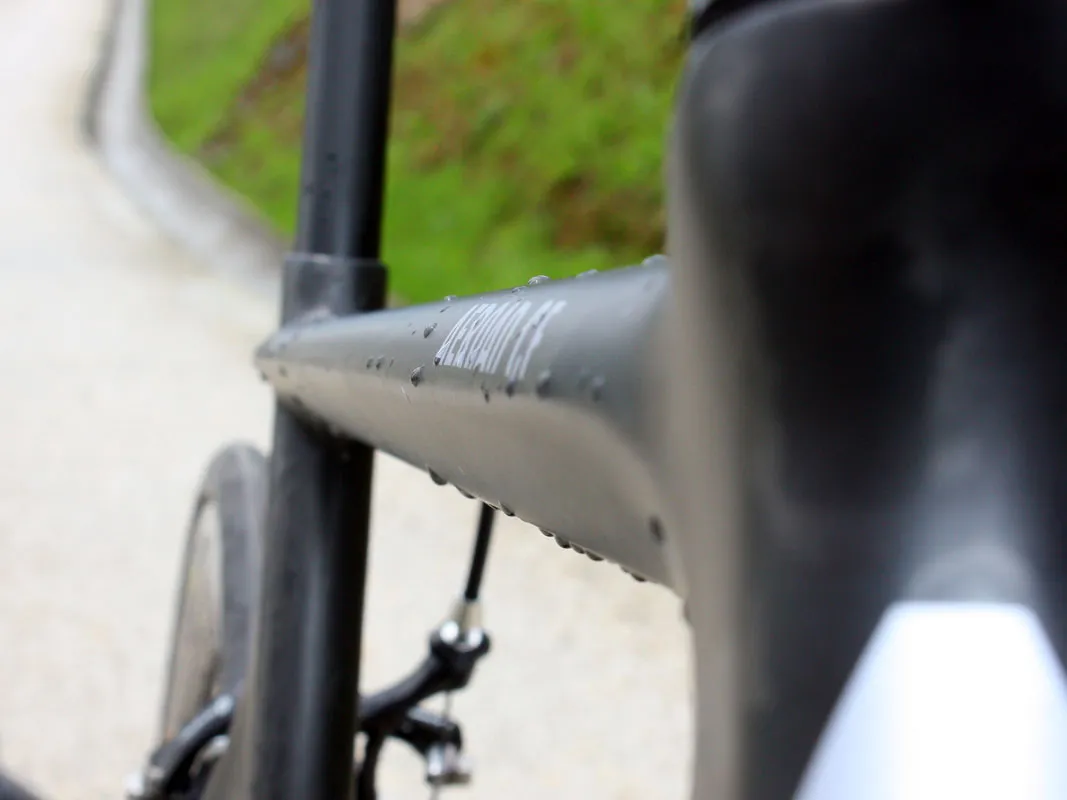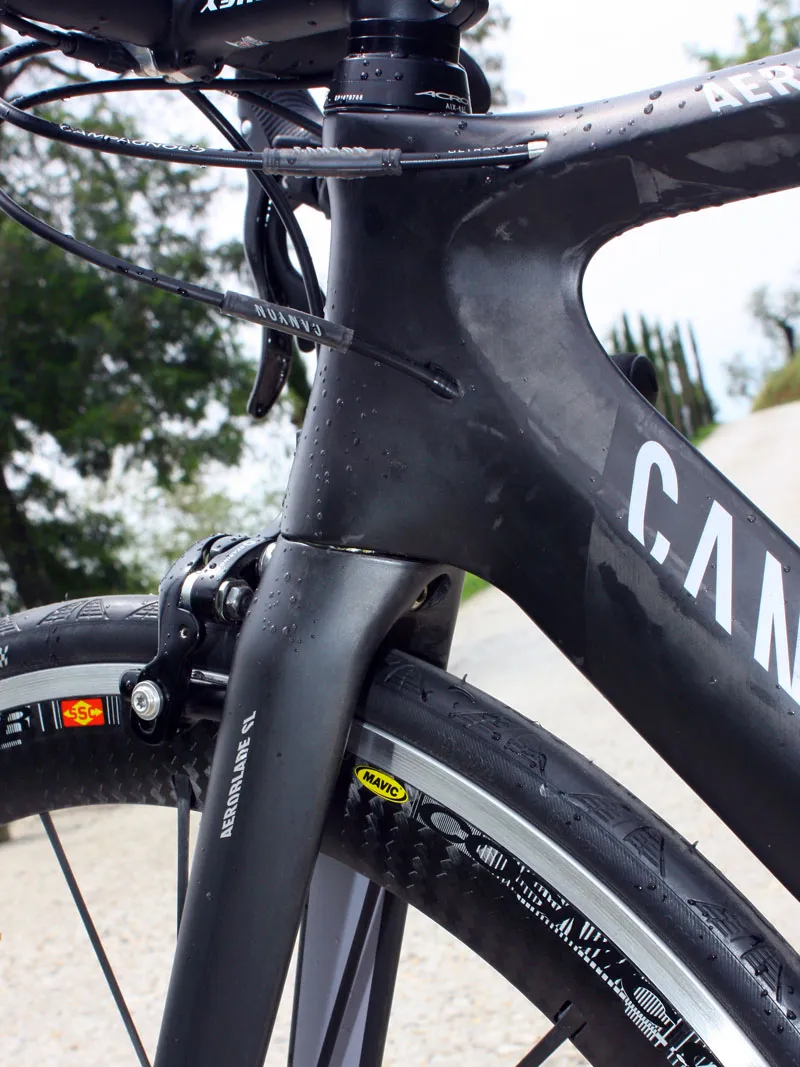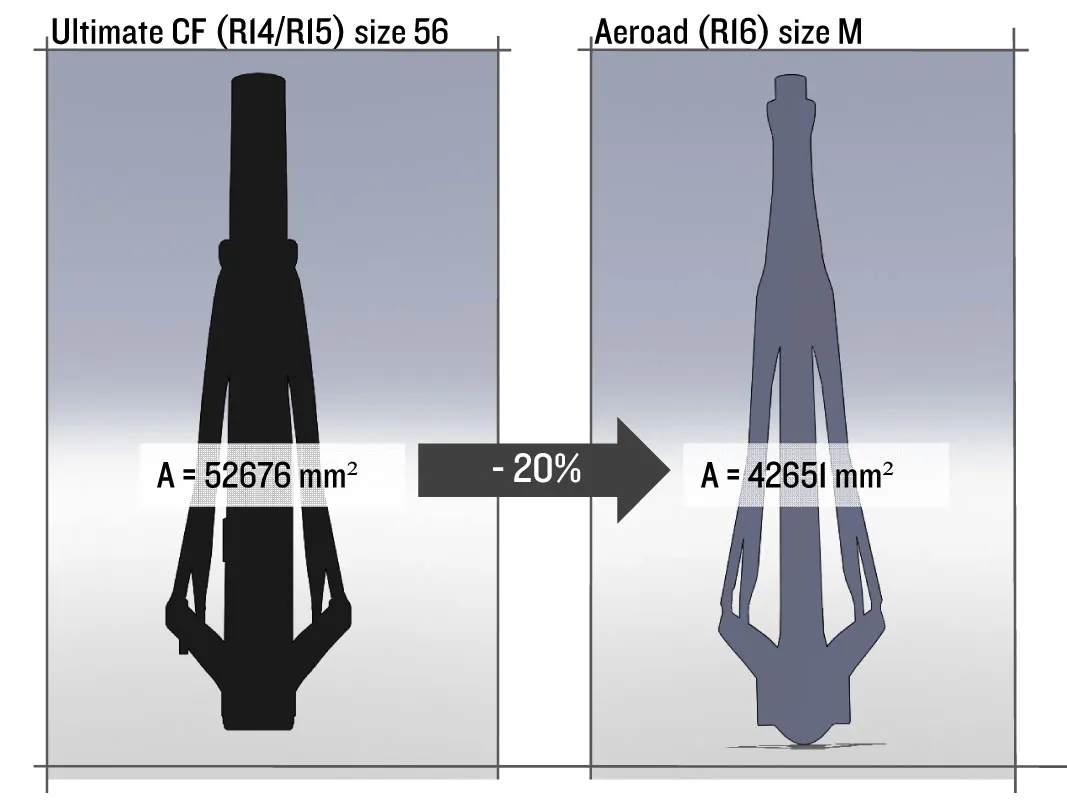German online-direct bicycle company Canyon have a reputation for making lightweight and amazingly stiff road machines such as the Ultimate CF and Ultimate CF SLX. For 2011, Canyon are adding an aero road bike to their repertoire – the Aeroad CF.
Canyon intend the Aeroad CF as more of a 'breakaway bike' or even a triathlon machine, where riders are less likely to be shielded from the wind by a peloton.
Rather than incorporate airfoil profiles throughout the frame, designers instead focused mainly on reducing the bike's frontal area and smoothing frame surface transitions – using especially deep cross-sections only at the head tube, down tube and seatstays – while maintaining or even improving upon the comfort of the SLX.
The hourglass-shaped head tube houses a downsized (for Canyon, that is) 1-1/8in to 1-1/4in tapered steerer tube and the seat tube is notably slender and symmetrical, unlike the company's broad and asymmetrical Maximus design. Chainstays are similarly bulbous to those found on the CF and SLX, but the extra-wide bottom bracket now uses press-fit bearing cups.
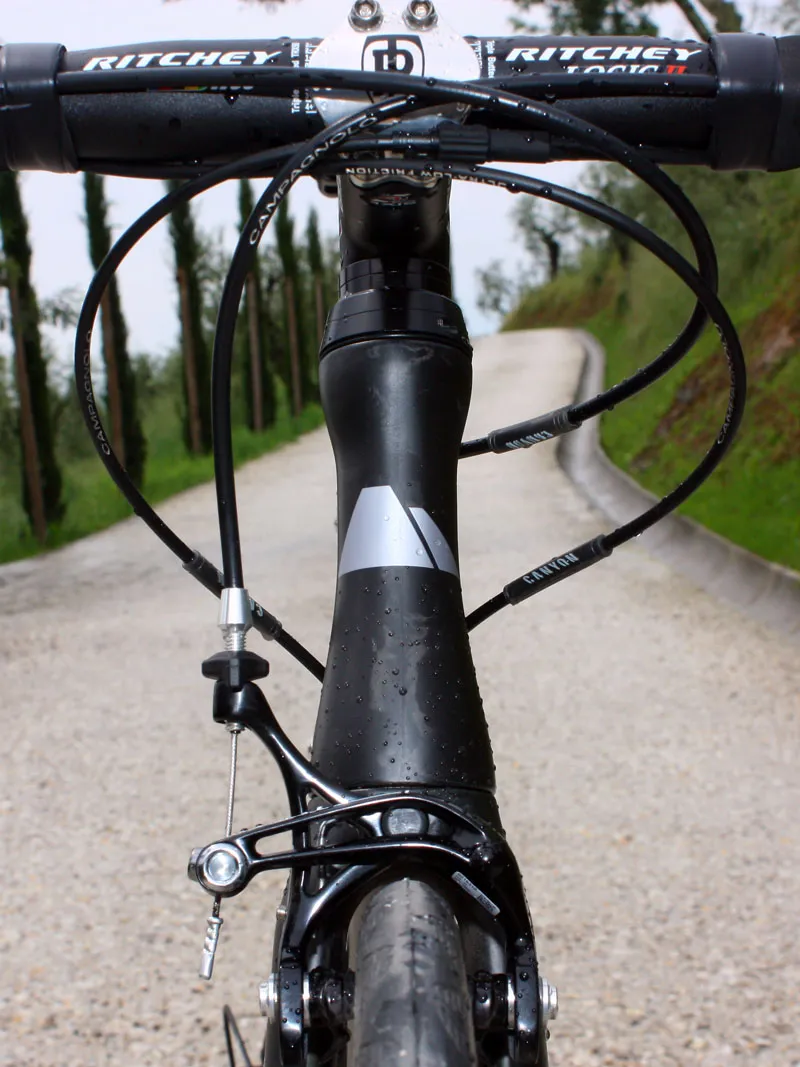
The tapered 1-1/8 to 1-1/4in head tube has an hourglass shape to help minimise frontal area
Cables have been moved inside the frame to keep the tube surfaces clean and a special Shimano Dura-Ace Di2-equipped Aeroad CF will feature its own internal wiring configuration and a dedicated battery mount beneath the non-driveside chainstay. Di2 buyers must be confident in their selection, however, as the cable routing hardware is specific for electronic or cable-actuated drivetrains and the routing hardware isn't interchangeable.
Relative to the burly Ultimate CF and Ultimate CF SLX, Canyon say the Aeroad CF's more svelte shape presents a 20 percent smaller frontal area. Intuitively, that should reduce aerodynamic drag, and Canyon engineer Vincenz Thoma says computer simulations have demonstrated that to be the case.
But interestingly, Canyon don't offer specific data in terms of either grams of drag or time or power savings. Neither have they conducted any wind tunnel testing, citing discrepancies with various companies' testing methods, variables with different rider positions, and even differences in frame sizes that can lead to incomparable information – comparing apples to oranges, if you will.
Instead, Thoma says Canyon plan to conduct real-world testing on a track with their sponsored Omega Pharma-Lotto riders using directly measured power outputs and recorded times, a method that other companies and teams have already put in place and shown to be useful.
Comfort, handling and fit also high priorities
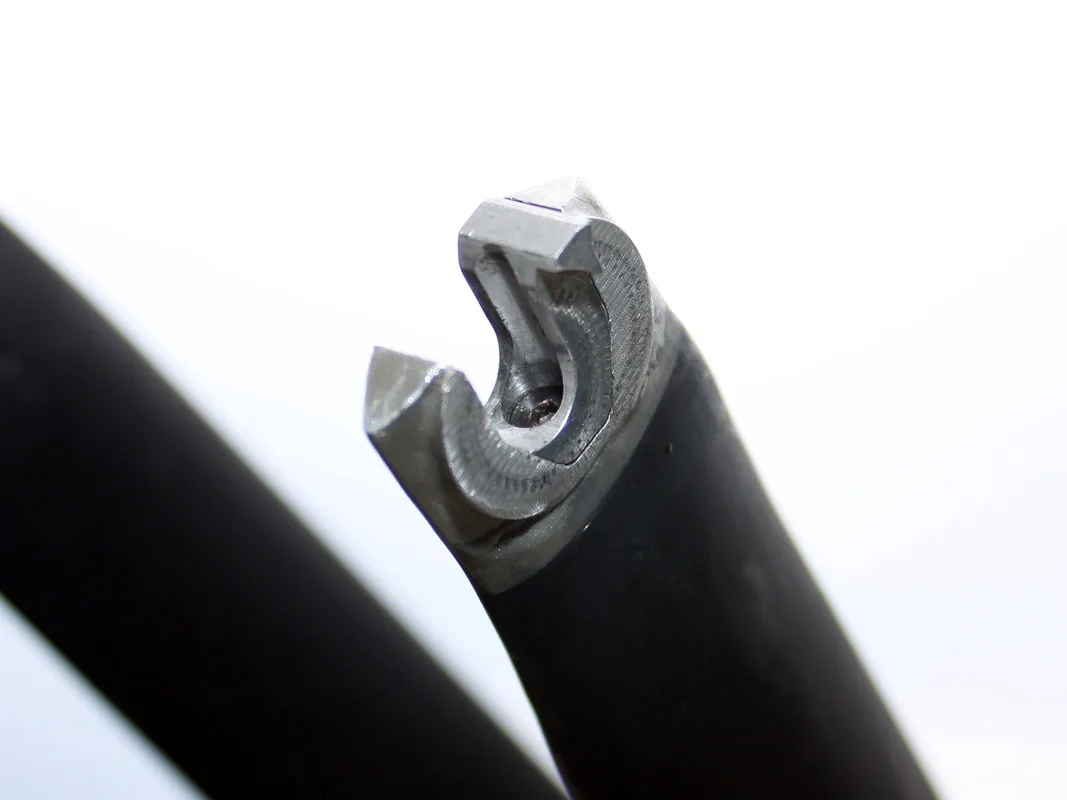
The uniquely adjustable fork rake allows Aeroad CF users to tune handling to their preferences
Rather than use exclusively carbon fibre in the construction, Canyon have added more flexible basalt fibres to the Aeroblade SL fork blades and seatpost to provide more give over rough roads. Seatpost setback is easily adjustable from 15-35mm (yielding effective 70.6 to 73.5-degree seat angles) and a clever interchangeable chip system in the fork tips allows users to choose between 39 or 44mm of rake. The latter yields comparably quick handling to the Ultimate CF or CF SLX, and the former produces a more stable feel suitable for the Aeroad CF's intended higher speeds.
Canyon will offer the Aeroad CF in six sizes. It's a contrast to the usual eight, but a change to X-Y stack and reach-based geometry should provide the same overall range as before. Size-specific tubing should maintain the intended ride feel across the range, and head tube lengths have dropped about 10mm across the board as a result of feedback from Omega Pharma-Lotto riders. Canyon say they also have an integrated stem in development that will allow for extra-low handlebar positions.
Target frame weights for the Aeroad CF are 980-1,130g, depending on size – an increase of about 70-100g over a comparably sized Ultimate CF SLX. Thoma admits that the Aeroad CF's slimmer tube shapes produce lower stiffness test numbers than the ultra-efficient CF or CF SLX, but stresses that its better aerodynamics will still make it a faster and more comfortable bike in certain situations.
Wine country
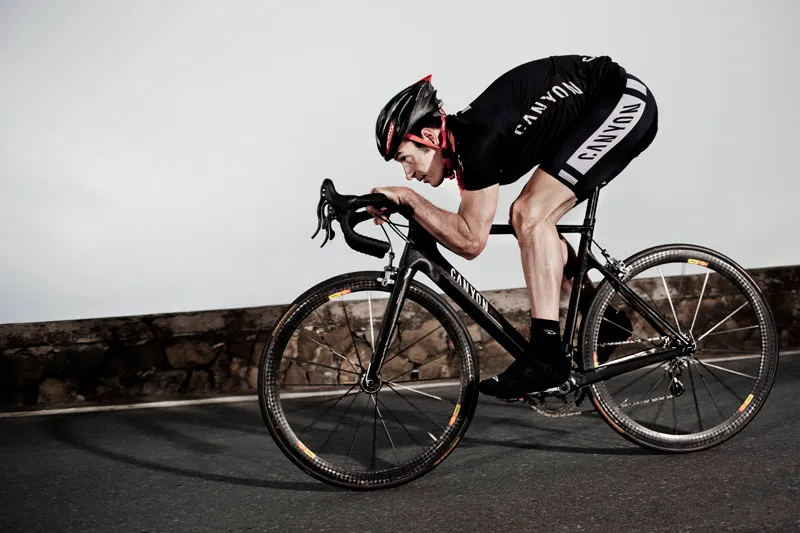
German cycling legend Erik Zabel provided Canyon with valuable test input during the Aeroad CF's development
We couldn't feel the slightly increased weight during our relatively short test rides around Il Borghetto di Andrea Tafi in Tuscany (the former Paris-Roubaix winner's idyllic bed and breakfast just outside of Lamporecchio), nor was there any obvious speed increase. But the subtly heightened comfort was noticeable relative to our current Ultimate CF SLX test bike, especially up front where the softer front end was better able to suck up unexpected potholes and roughly finished asphalt patches.
The Aeroad CF also displayed excellent handling manners, with the shorter-rake fork setting lending a more stable feel than the CF or CF SLX at speed. It still carved through tight downhill switchbacks and flicked around last-second road hazards without ever feeling too twitchy. Unfortunately, we didn't have a chance to sample the other setting during the launch.
That front end was notably less rigid than on the CF or CF SLX, which manifested in a springier but slightly less direct feel when hammering out of the saddle for sprints or steep climbs. Bottom-end stiffness remains very good for efficient power transfer while motoring on the flats but the Aeroad CF just doesn't exude quite the same edginess as its stablemates.
That being said, those riders who either don't need or want the CF or CF SLX's ultra-high stiffness but are looking for a fast, comfortable and reasonably light machine for quickly gobbling up long stretches of road will find much to like when the Aeroad becomes available this autumn. Canyon will offer five complete build kits, including Campagnolo Chorus, Record or Super Record, or Shimano Dura-Ace or Dura-Ace Di2 component groups, all with Mavic aero wheels, Continental tyres, and cockpits from Ritchey and Selle Italia.
Prices start at around €3,000 for the complete bikes but unfortunately, distribution is still mostly limited to continental Europe, at least for now. Canyon suggest that UK distribution is coming "very soon" – perhaps by year's end – but a US network still doesn't have a set timetable.
